While there are several problems that can occur with fixtures in bathrooms, a toilet that won’t flush is among the worst. It can lead to embarrassing situations or flood the floor if there’s a clog in the line and water has nowhere to go.
Toilet clogs are relatively easy to diagnose, but many homeowners wonder what happens when their toilet won’t flush and it’s not clogged.
If a toilet in your home doesn’t appear to be clogged and won’t flush, you could have a clog in the rim holes inside the toilet bowl.
They can become clogged like siphon jet holes, but the issue could be caused by a faulty flapper, flush valve or due to an issue with the lift chain.
That’s what we’re going to discuss, given there are more than a half-dozen reasons why a toilet won’t flush when there’s no visible clog.
Whether there are damaged parts in the tank or deeper issues, our guide has solutions for toilets that aren’t clogged but still won’t flush.
What Type of Toilet Do You Have?
Before we dig into the problems that can cause a toilet not to flush, think about the type of toilet you’re dealing with.
Do you have a wall-mounted commode with a toilet tank behind the wall or something more traditional?
That could be an issue depending on the access. The same applies to homeowners with pressure-assisted systems in the tank or intelligent commodes with self-flushing mechanisms.
If you have already tried a plunger and don’t see a blockage, there’s a strong chance the problem lies inside the toilet tank or bowl. That means it’s time to take the lid off the toilet tank and get started.
Why Your Toilet Won’t Flush When It’s Not Clogged
When your toilet won’t flush, but isn’t clogged, it’s time to find the fix. While there are numerous parts that can fail and cause toilets to malfunction – it all starts with what’s inside the toilet tank.
When there’s an issue with flushing and no clog in the bowl, the problem generally lies in the tank.
Inside the tank of each toilet is the flushing mechanism. It’s connected to the trip lever on the outside of the toilet tank.
While the type of flushing system will vary, all of our tips will work on tanks with flappers, overflow tubes, and fill valves.
Check The Toilet Lift Chain
You may never hear it inside the toilet tank, but many commodes have a small chain inside called a flapper chain or toilet lift chain.
When you push the flush handle, the chain helps move the flapper releasing water into the toilet bowl for a flush.
These chains can become disconnected, and a loose chain is incredibly easy to fix. If the flapper chain has come loose, simply reattach it to the toilet flapper or flush handle.
You may need a pair of pliers to open and crimp a new link or a replacement chain if the one for your commode is damaged.
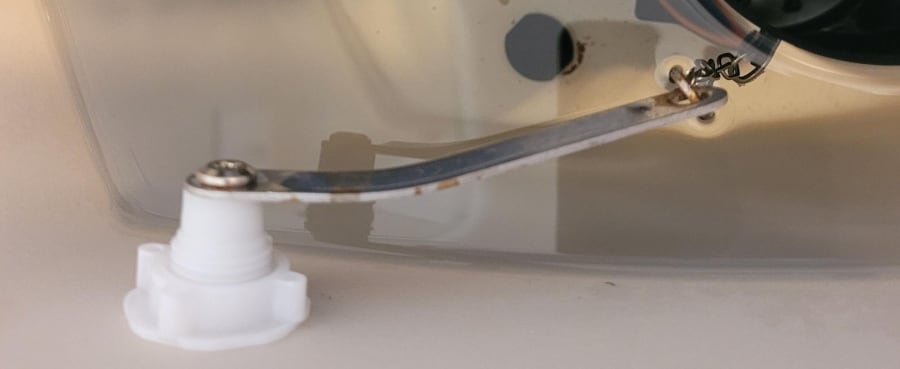
If you need help with this chain, the video below will walk you through the process, which takes less than 5 minutes. A lift chain can also become stuck inside the tank and must be set to the right length to perform at full power.
Check The Flapper
If the handle and chain are working, but nothing happens when you flush the toilet, it could also be an issue with the flapper in the toilet tank.
The flapper is made from rubber which is resilient but can fail. If the flapper appears damaged with a hole in it or warped, it’s time to replace it with a new one. You’ll need to know what type of flushing mechanism you have in the toilet tank to do this.
Alternatively, you can install the entire flush valve with a kit that may be more cost-effective, depending on the style and age of your commode.
To find the right part, you’ll need to look for a manufacturer stamp on the inside of the tank, as shown below.
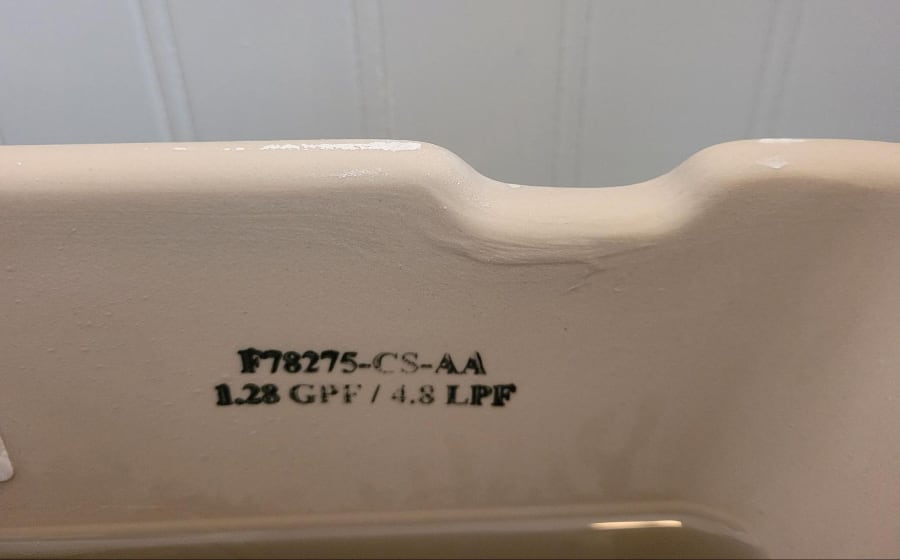
This mark is usually found above the waterline, although the placement can vary depending on the age of the toilet.
chnology has made things simpler with newer models, however. As you can see with this KOHLER commode, simply scanning the QR code on the toilet tank label tells you everything you need to know.
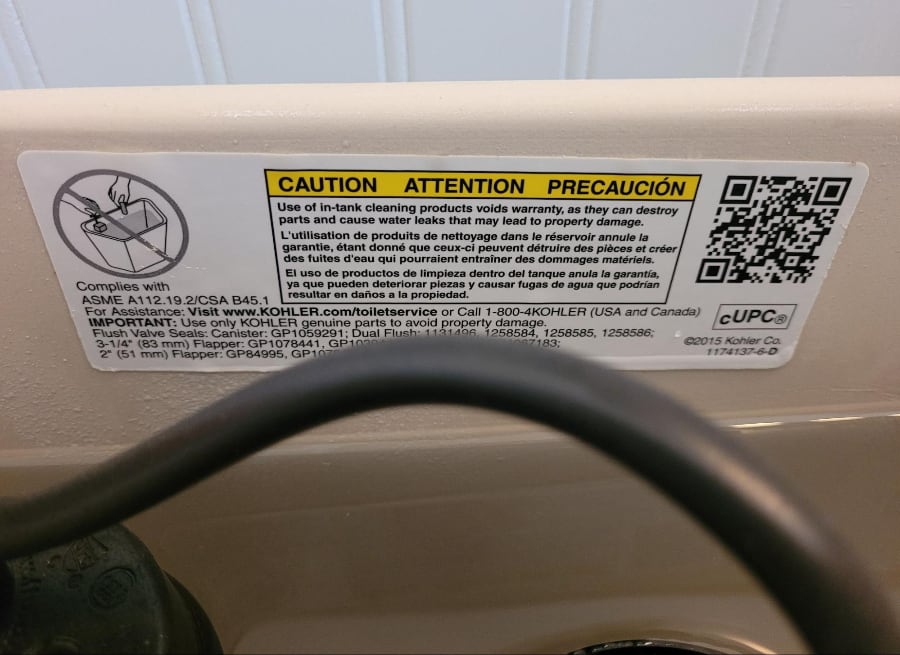
Is Water low in the Tank?
When you removed the toilet tank lid, did the water level seem low? If so, that’s an issue that can affect how a toilet flushes.
If there is insufficient water in the toilet tank, it can’t flush because there’s not enough water for the bowl.
This can result in a weak flush to no toilet flush at all, but the first thing to check is to make sure the water hasn’t been turned off. A water supply line sends water to the toilet tank from a valve in the bathroom which should be fully on. You can check it by giving it a gentle twist.
The fill valve or float ball could also be the issue. If bumped or not properly set, the toilet won’t get enough water to function as it should. In most cases, this is something else you can adjust with a simple twist.
Depending on the type of toilet, there should be a water line mark to let you know the level needed for maximum efficiency. With the KOHLER 3200 series 3-inch flush valve, you can clearly see the water line mark.
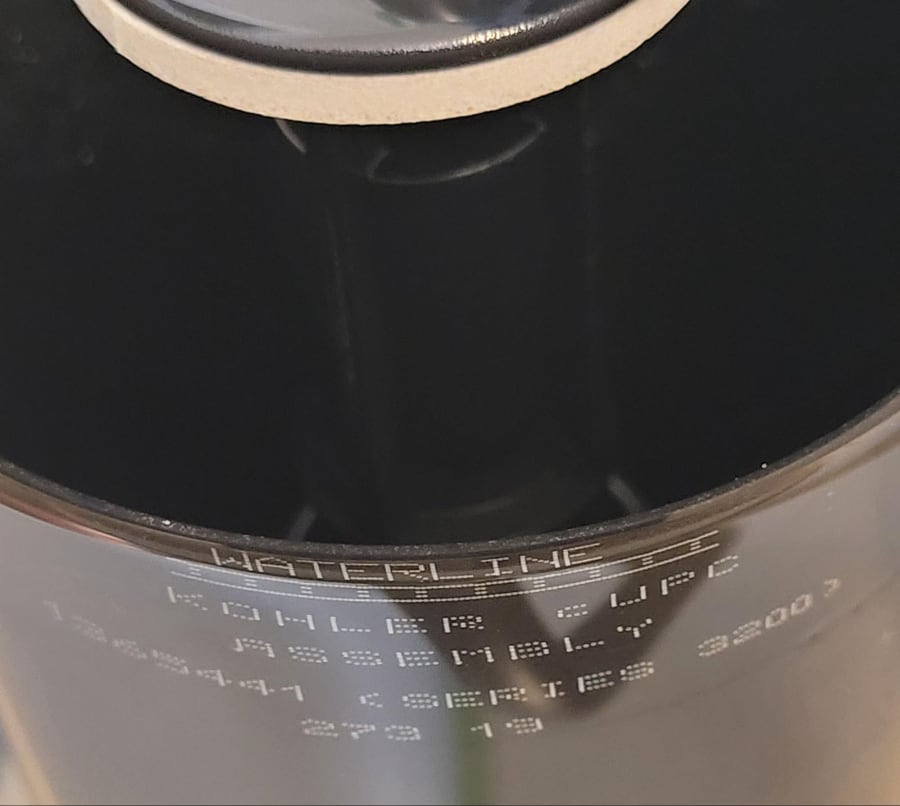
If you are unsure how to set the water level on any toilet, refer to the manufacturer’s website with the model number for the flush valve.
Check and Clean Clogged Rim Holes
One of the last steps homeowners can take is to check for blockages inside the toilet bowl itself. Rim or inlet holes are another feature that varies by manufacturer and toilet style. With TOTO, you might find two nozzles courtesy of their Tornado Flush system instead of a series of small holes beneath the rim like you see in this photo:
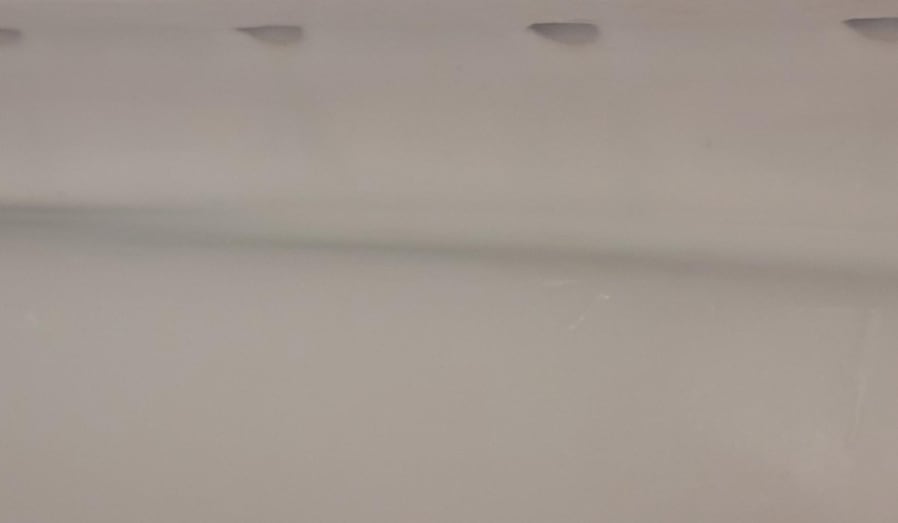
You can take a handheld mirror to check beneath the rim for grime or possible obstruction. Hard water can clog these holes with limescale and mineral deposits, which may affect how the toilet rinses and flushes. Blocked jets can also lead to a drier toilet bowl, allowing bacteria to build up.
Those holes could be clogged if you’ve noticed more streaks than usual or dry spots after a flush. You’ll need to round up a few supplies and set aside 10-15 minutes of your time to clean them.
Supplies
- White Vinegar
- Rubber gloves
- Small mirror
- Funnel
- Spray bottle
- Rim brush
Step 1: Use Vinegar
Remove the toilet lid from the tank and locate the overflow tube. Look for a small pipe near the toilet flapper with a small line clipped to the top.
If it’s a tight fit, use the funnel to pour around 2 cups of white vinegar down the tube and set a timer. Allow 30 minutes to an hour for the solution to work before flushing the toilet and replacing the lid.
You can block off the holes beneath the rim and let the mixture sit overnight, but you’ll want to proceed to the next step in most cases.
Step 2: Prep the Area
Before you begin to clean the jets or rim holes in the toilet bowl, you need to prepare a few supplies. Vinegar is mildly acidic and quite smelly, so you’ll want to put on gloves.
It’s also good to open a window or turn on a bathroom exhaust fan for ventilation to keep from being overpowered by the smell.
Step 3: Mix the Vinegar
Mix a solution of vinegar and water using a 1:1 ratio. This is the most common method for household cleaning using regular distilled vinegar, and you can cut back on the water to increase the strength of the solution.
Take the funnel and pour the mixture into a spray bottle. Keep the solution handy when cleaning is finished, as you can use it every few months to clean the rim holes.
Step 4: Clean the Rim Holes
Take thel mirror and use it underneath the rim to get an idea of where the rim jet holes are on your commode or if you can see mineral deposits built up.
While cautious of the angle, use the bottle with the vinegar cleaning solution to spray the rim holes. You can do a section at a time if it’s easier or soak the whole underside of the rim at once.
When satisfied, use the rim brush to scrub away at the underside of the rim.
You can use an old toilet brush or toothbrush as a substitute, but rim brushes are ergonomically designed for this purpose.
Check your progress with the mirror, and when the job is complete, give the toilet a full flush to clear any remaining sediment from the holes or surface.
The Bottom Line
If our methods didn’t work and you’re still experiencing a toilet with poor performance or one that won’t flush, it could be an issue that you can’t see.
Hidden blockages cause headaches to millions of homeowners each year, and it’s something that plagues older homes.
The best step is to call a professional plumber and have them assess the situation if you’ve tried everything, including these tips to unclog stubborn commodes.
FAQ
What Is the Best Type of Toilet Paper To Flush Down a Commode?
Any paper that is recycled or rapidly dissolves is an excellent choice. Cushier options may be gentler to use, but too much can stop up a toilet just like using too much toilet paper.
Can an Auger Help a Toilet Flush if a Toilet Plunger Doesn’t Work?
Yes, a toilet auger can work where plungers fail as they work deep into the trapway to clear any hidden clogs.
How Do I Clean the Clogged Siphon Jet on a Commode?
Some toilets have a siphon jet hole on the opposite side of the toilet bowl from the drain. These holes are easy to identify, and you can learn how to clean them in our guide.
